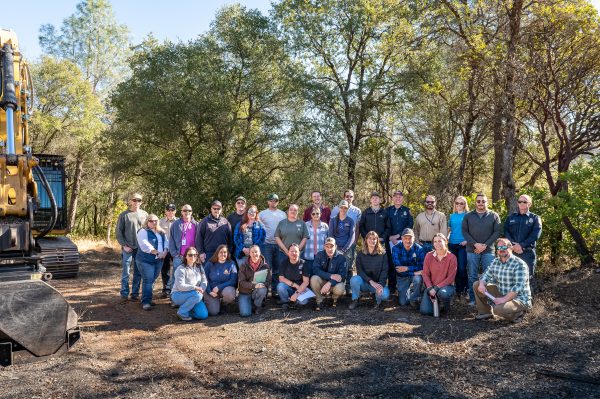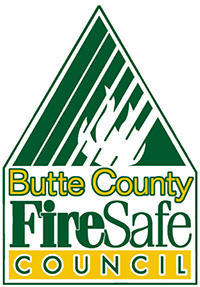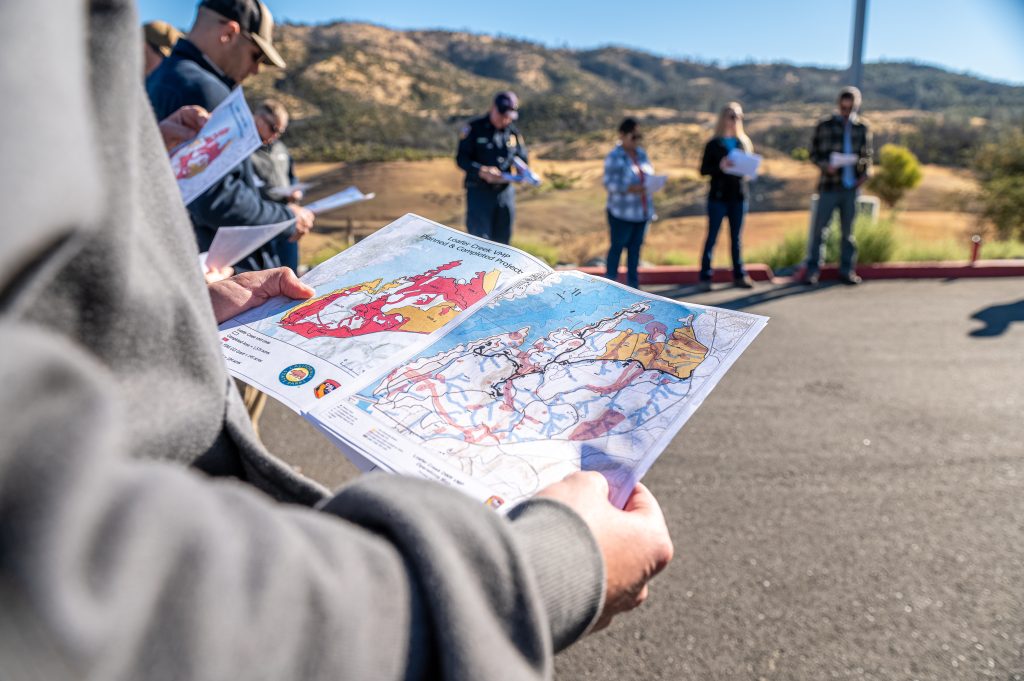On November 7th, community members from Butte County and beyond gathered at Loafer Creek State Recreation Area to witness firsthand the transformative impact of collaborative wildfire safety efforts. This outing, guided by CAL FIRE, the Department of Water Resources (DWR), and California State Parks staff, was hosted in collaboration with the Butte County Collaborative Group.
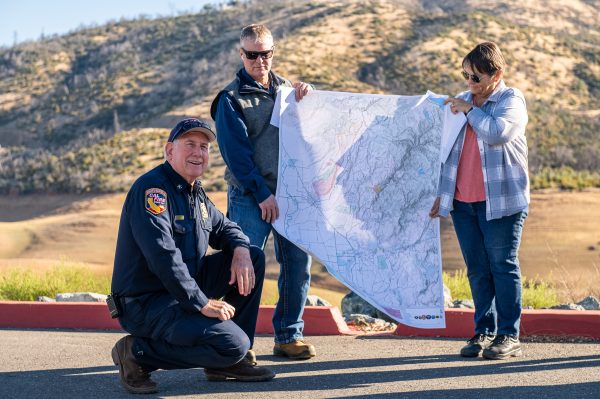
The tour highlighted areas in Loafer Creek where CAL FIRE’s Vegetation Management Program (VMP) allows for the implementation of wildfire safety projects. A key stop during the outing was the “group camp” area. Nestled among live and blue oak trees, this unit was recently treated with “good fire”—carefully managed prescribed burns that reduce fuel loads and restore forest health conducted by CAL FIRE crews. While being ecologically beneficial, these prescribed fires are also socially beneficial, and foster safe, healthy forests for campers, day-users and other folks recreating on the banks of south Lake Oroville. This stop was just one example of how collaboration and long-term planning are addressing wildfire safety challenges in the region.
Before the units received prescribed fire, the area was cleared of ladder fuels, dead wood, and underbrush through a grant administered by California State Parks. CAL FIRE Butte Unit’s Dave Derby noted the challenges of scheduling prescribed burns due to narrow “burn windows,” with only a limited number of viable days each year. Prescribed fire operations have to fall into very specific, “prescriptions”, which dictate if / when prescribed fire can be utilized. “This area is night and day from six months ago,” commented Battalion Chief Jason Dyer.
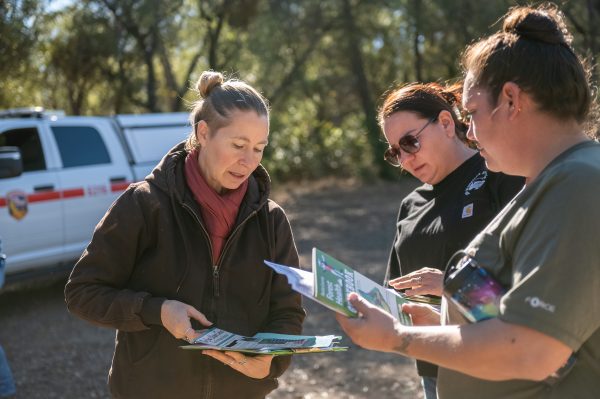
Efforts at Loafer Creek have been ongoing for over a decade as part of DWR’s Fuel Load Management Plan. “We’re removing unhealthy, leaning trees to open the canopy and will continue to clear overgrown vegetation across Loafer Creek,” shared Kryssy Mache, an Environmental Scientist with the California Department of Water Resources.
Mooretown Rancheria representatives on the tour expressed their appreciation, noting the area’s significant cultural importance. “The partnership with DWR on cultural resource monitoring has been very positive,” said Courtney Hill. “We value being included in these projects.” Meaningful tribal engagement ensures that traditional ecological knowledge and cultural heritage are respected and incorporated into land management practices.
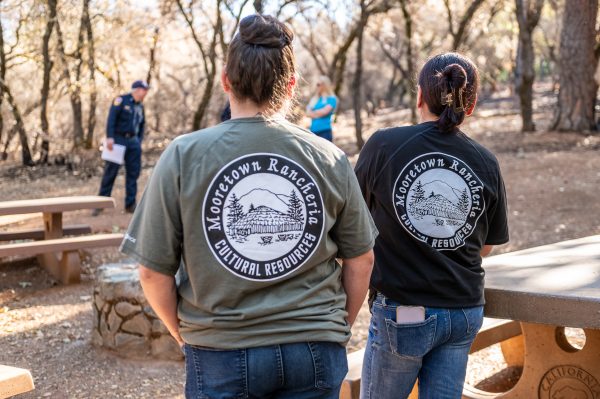
Extensive work remains to restore this fire-adapted forest to its peak health. CAL FIRE representatives reinforced that time is of the essence, as unprecedented wildfires and longer, drier fire seasons remain a recurring threat in this area.
Unit Forester Dave Derby pointed out that lengthy environmental reviews—sometimes exceeding a year—can delay critical projects. In 2020, the North Complex Fire swept through areas still awaiting clearance, compounding challenges with the addition of dead hazard trees and rapidly regrowing brush.The ongoing efforts at Loafer Creek demonstrate the power of collaboration between agencies, scientists, and local communities. While challenges remain, these partnerships are paving the way for safer, more resilient forests for generations to come.
